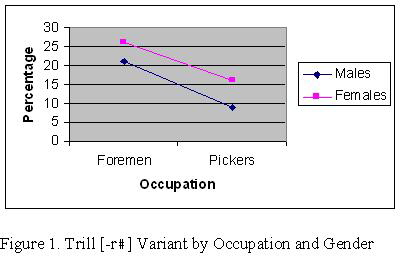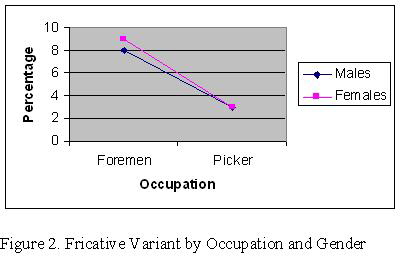
Mexicans have come from states located on the Mexican plateau to Kennett Square, Pennsylvania, for more than thirty-five years. Some informants’ accounts date the first immigrant to the area by the mid-seventies, “I know a former worker from this same company who currently lives in his hometown, la Ordeńa. He worked long enough that he now receives his pension there.” For many years, those workers experienced cyclic migration; alternating long periods working in the U.S. with short periods of time living with their family in Mexico. They wanted to work and to make enough money to go back home and reside there with their loved ones. Some went back home; others decided to stay here and bring their families along; women and young children came. One of those women who came following her husband commented, “It’s a long way from my hometown, San Lucas; you spend days and nights in the bus looking through the window seeing the landscape change and hoping that the next stop would be yours.” This woman didn’t come willingly; she had to leave her older children at home. She could only bring her two youngest daughters. She added, “I didn’t want to come, but my husband wanted me to join him to take care of him, you know; to cook and to clean for him. Finally, here I am in Keny”
Keny, as Mexicans called Kennett Square, is located to the southwest of Philadelphia; it is a rural town nearby Longwood Gardens. Since the eighties, Kennett Square has been identified as the main mushroom shipping center in the United States (Bastalick, 1982). When the first collection of data took place, by the mid nineties, the working force in the farms was made up of Puerto Ricans occupying foremen positions and Mexicans doing the back breaking manual labor. One could see mostly males working in the farms, but there were a few females in sight. The workforce demographics changed by 2002 when the second collection of data occurred. Mexicans not only were mainly in charge of the mushroom production but also the number of women working in the farms had increased. A female expressed that “nowadays, there are more women working in packing and in the mushroom houses2.”
When these working women were asked if they had worked before coming to the United States, they usually replied, “No, one doesn’t have to work in Mexico. One has to stay at home looking after the children and doing the house chores.” Others qualified their responses by saying, “Maybe, that is different in the city, but at home, in Moroleón, we don’t have to work outside the house. Men have to provide for their family; it’s their responsibility.” Even though all agreed that they got tired working, almost everybody seemed excited to be able to earn their own money. “It makes me happy that I don’t have to ask money to my husband to purchase everything.” Or, “Now, there’s no need to explain my most intimate needs because I can afford buying them without telling my husband.”
Analysis
Because men and women work outside the house, some changes have occurred in their households. It is no longer the wives’ duty to prepare the children to go to school or to feed them. Now, men have to participate actively in those traditional house chores that were prescriptive to females in Mexico. One informant states, “I start working early in the morning. My husband dresses our children and prepares breakfast for them before going to work; his shift starts later.” This has transgressed their traditional patriarchal behavior; men are the breadwinners who do not have to do house chores or to look after children. Women are stay at home moms who receive their family with freshly made food. Here, in Kennett Square the male cannot support his family with his sole income. A male worker said, “It’s not possible. No! It’s not possible to support a family with one income, or at least not with this job. One doesn’t make enough money to pay rent, bills, food. No, there’s no way!” Or, “Women have to work here; they have to help their husbands to support their families.” The male’s inability to fulfill his role of provider might erode the basis for his patriarchy. At the same time, it violates the image of women as homemakers, circumscribed by domestic routines (Nash, 1999).
It is here in this environment, in this new reality for both men and women, where, without knowing it, they embrace the new life style where women get a more egalitarian treatment due to their active role in the household economy. Thus, this new reality “bring about changes in gender relations that have complex and uneven effects; they present women with opportunities…” (Menjívar, 1999: 604). Some women state, “My husband allows me to work because he knows that if I didn’t work, we couldn’t afford living here with the whole family.” Or, “You see some families that have to go back to Mexico when women don’t work along with their husbands. It’s better to work and to keep the family together.” Or, “There are some families that have a difficult time surviving here. They are constantly borrowing money to pay their bills; they are always in debt.”
Two linguistic variables3 are selected here to exhibit the phonological change that seems to relate to the social change described above. The first is the simple vibrant /-r/ in word final position for example in words like “lava[r]4 pańales” ‘to wash diapers’. The second is the alveopalatal affricate phoneme /č/, in words like “las [č]inas poblanas” ‘the Chinese from Puebla’. Mexicans residing in Kennett Square utter some variants5 of the variables that are not usually associated with Mexican Spanish. Even though the vibrant /-r/ in coda position6, in the Spanish speaking countries, may be uttered as a trill [r#], tap [r], voiceless fricative [ř8] or voiced fricative [ř] (Dalbor, 1997: 258), in Mexican Spanish, Lope Blanch (1991) reports the trill [r#] before pause in order to give emphasis to speaker’s speech.
This community pronounces the simple vibrant /-r/ as a flap [-r] and as a trill [-r#]. A flap is a sound produced by the single rapid contact of two organs, in this case “the tongue tip quickly strikes the alveolar ridge once as the airstreams passes through creating a very short stop sound” (Dalbor, 1997: 257). In contrast, the tongue strikes several times the alveolar ridge when pronouncing the trill [-r#]. The trill realization found in Mexican Spanish in the present sample does not seem to be used for emphasis7. The following are some examples of its occurrence: “tene[r)] granja” ‘to have a farm’, “informa[r)]” ‘to inform’, “deci[r)] cultura” ‘to say culture’, “esta[r)] tan cansado” ‘to be so tired’ or , “hace[r)] la cama” ‘to make the bed’.
The trill [-r#] realization for the simple vibrant /-r/ in word final position as well as the fricative realization [š] of /č/ seem to be directly related to occupation9 and gender social factors on the mushroom farms. Even though the sample is not balanced between women and men; i.e. there are more males than females, interesting tendencies can be observed. There are seventeen males and ten females in the sample collected in 2002 which will be used to describe the linguistic phenomena referred above10. Out of these there are nineteen foremen: only five are women and fourteen are men. The remaining workers are five female janitors and five male pickers.
To understand this paper’s claim it is necessary to describe the mushroom production; it entails a careful and hard process that mainly involves manual labor and the precise use of time. Mushrooms are fungi and grown from spores. An adequate physical environment has to be created for the mushrooms to grow starting with the preparation of the compost that is made of chicken manure, synthetic ingredients such as corn cobs, or a blend of the two. It has to be watered frequently to avoid fires until it is placed inside the houses where spores are deposited. In about three weeks the first ‘flush’ or break occurs and picking is conducted for the next two months (Bastalick, 1982). The correct watering of the mushroom beds and control of the temperature in the houses drastically decreases or increases the production. One worker proudly states, “I wasn’t in charge of watering the beds. However, when the foreman in charge of administering the water went on vacations, the boss noticed that the production increased. Once my immediate supervisor came back, the boss asked him to let me decide when to water the beds.”


Quantitative11 and qualitative analysis of the data seem to support the relationship between occupation and gender factor groups for both dependent linguistic variables. The results yielded crosstabulating gender and occupation factors indicate that foremen utter more often the trill [-r#] and the fricative variant [š]. This is illustrated graphically in figures 1 and 2. The results for the standard variants, i.e. the flap [-r] for the simple vibrant /-r/ and the affricate [č] for the affricate /č/ are not included in these figures. The percentages of occurrence for foremen uttering the trill [-r#] variant are 21% and 26% for men and women respectively. The fricative variant [š] is used 8% and 9%12 for the same groups. For the trill [-r#] variant, female foremen lead the linguistic change; prestige seems to emanate from the shared responsibility at work and at home. However, there is not really a significant difference in the percentages of occurrence of the fricative variant [š]. Thus, it might be fair to state that in phonology13, there seems to be no difference between men and women when both men and women share the same working responsibilities (Holmquist, 1988).
Conclusion
Men and women on the mushroom farms seem to undergo a social change that reflects on the phonological changes documented here. Some women are wage-earners who have an important role as bread-winners and as skillful foremen that can increase the production in the largest mushroom production center in the country (Bastalick, 1988).
Men and women are aware of the new reality where patriarchal predominance is generally no longer accepted. Male informants expressed, “women here don’t accept to be beaten or humiliated by their husbands. They don’t take any abuse. They leave their husbands because these women feel they can survive without them.” Or, “One can’t threaten a woman saying that they will leave her because it might be that she takes his luggage to the door!” It seems that while harvesting mushrooms, men and women are also harvesting a new life style. Summing up, in Cameron’s words, “a change in linguistic practice is not just a reflection of some fundamental social change: it is itself, a social change (1990: 90).
References - Click Here